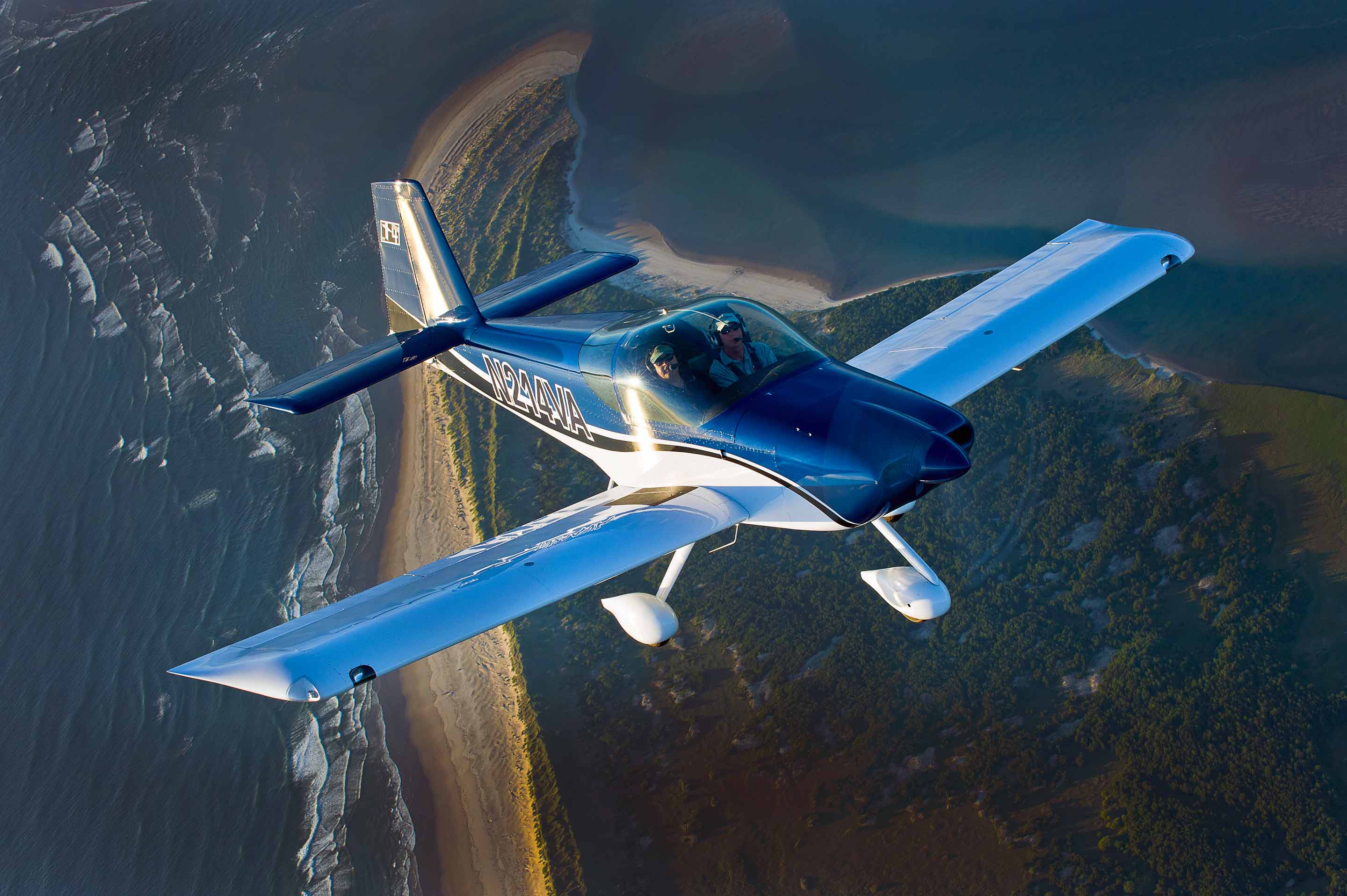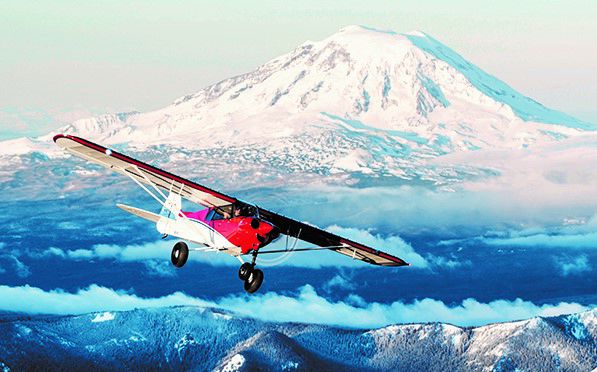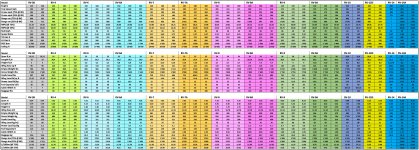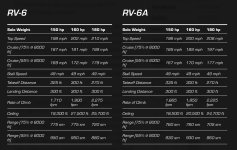Clearly generated by AIHow about now...
No RV builder/owner/pilot would let their exhaust stacks become so uneven (ROFL)
Clearly generated by AIHow about now...
Yeah, NOW you've done it!Not interested in participating in this type of debate but thought I would point out that as far as performance goes, it depends on what actual parameters you are debating…
The tri gear will win every time if take-off and landing distances are what is being compared.
That's me - I can't tell you how many attractive ladies I have surrounding me in a typical bar when I loudly announce to them that I fly a tailwheel aircraft. Like moths to a flame!I had thought the primary benefit of a tailwheel was telling everybody you flew a tailwheel.
How do you know somebody's a tailwheel pilot? Don't worry, they'll tell you!
(OP) I think you would be happy with either (NW/TW). I've never really found it that hard to operate either configuration. As a data point, when I was building my RV6 I didn't have a tailwill endorsement. I got it in the RV I built using Alex DeDominicis. If memory serves I had about two hundred hours total time.Put me down for a nose wheel. It is definitely a personal preference. I think they look better and are easier to operate. My hat is off to all those pilots that have the extra skills to safely operate a tail wheel aircraft. For me, being a skilled pilot is my goal. However the extra challenge of operating a tail wheel aircraft (although I am confident I could achieve with the proper training) does not fall into the "fun" column which is why I am involved in aviation.
How do you know somebody's a vegan? How do you know if somebody's been to the gym today? How do you know if somebody's a tailwheel pilot?How do you know somebody's a tailwheel pilot? Don't worry, they'll tell you!
Mickey: You crack me UP!!!That's me - I can't tell you how many attractive ladies I have surrounding me in a typical bar when I loudly announce to them that I fly a tailwheel aircraft. Like moths to a flame!
Nose wheel handles crosswind landings better.
Have you considered that the odds are that those that don’t leave the house may very well be low time or student pilots?I hear this a lot. I think it is completely false, or at least misleading (unless there is something special about the -14 that I don't know about)
I'm out there flying my -8 on days when the 172s and Cherokees won't leave the house.
For fun I'm actively looking for the airport with the greatest crosswind component.
Crosswind is just not an issue for anyone that is spending the time to learn to fly their aircraft and stay current.
Don't let FUD impact your buying decision.
A lot of the higher load carrying STOL airplanes, are tricycle gear, but the fact that the majority are tail draggers is for many other reasons other than just that it makes them land and takeoff shorter.Yeah, NOW you've done it!
Um..........then it makes me wonder why nearly all of the STOL aircraft are tail-draggers.I'm sure there are suddenly a bunch of tail wheel pilots that would take you up on that challenge. As we say in medicine when we hear some odd statistic: "State your source."

I don’t know that I would say that tricycle gear, RVs handle, crosswinds better, but I think there is no question that when the conditions are really bad, the workload on the pilot is not nearly as high.I hear this a lot. I think it is completely false, or at least misleading (unless there is something special about the -14 that I don't know about)
I'm out there flying my -8 on days when the 172s and Cherokees won't leave the house.
For fun I'm actively looking for the airport with the greatest crosswind component.
Crosswind is just not an issue for anyone that is spending the time to learn to fly their aircraft and stay current.
Don't let FUD impact your buying decision.
In addition to what Scott M. posted above about the -14/-14A, another example are CubCrafters' NXCub (nose wheel version) and their XCub (tailwheel version). Higher achievable AoA's for takeoff and landing leads to shorter takeoff and landing distances. Also, they designed the nose gear with backcountry strips in mind. CubCrafters built the NXCub with an extremely strong and robust nose gear design and mount to enable stomping on the brakes right at touchdown to achieve a very short rollout, even on rough strips (obviously, not to be done on an 'A' model RV!).Yeah, NOW you've done it!
Um..........then it makes me wonder why nearly all of the STOL aircraft are tail-draggers.I'm sure there are suddenly a bunch of tail wheel pilots that would take you up on that challenge. As we say in medicine when we hear some odd statistic: "State your source."

 www.aviationconsumer.com
www.aviationconsumer.com
I was there to observe these accidents, I'm sure I can google a picture of any number of both nose wheel and tailwheel RV's upside down. My personal on the scene observations sample; favor the nose wheel inverting itself more often. If there were equal chances of nose wheel and tailwheels inverting themselves I should have seen more that the zero tailwheels inverted!How about now...
Not all military aircraft are tricycle. I have 2300+ hours in a military taildragger.In all reality, tailwheel is a dying concept outside of the off field and hobby market. Professionally all military and commercial planes have made the jump to nose wheel. If you want skills that will transfer to the maximum number of planes, nose wheel. You'll get more practically usable time logged and you'll have cheaper insurance as well as an easier time 99% of the time in taxi and landing. Nose wheel aircraft are not incapable of landing off airport for that matter so you're purely in it for the aesthetic at this point.
This is a bit inconclusive since the -14 tested were powered by vastly different motors.Case in point…
For the measured takeoff and landing distances for the RV-14A in the chart linked below, I was nearly dragging the tail tiedown ring on the runway for the takeoffs.
That produces quite a bit higher angle of attack than is possible for the tail dragger during takeoff.
This also comes into play for a minimum distance landing.

I just happen to be retired as well, but I also live in an area prone to high gusty Crosswinds. You may depart in calm conditions, but that can change quite quickly upon return.Tricycle is better for tough situations such as gusty crosswinds and a tired pilot after a brutal IFR flight.
I'd consider tail wheel now that I am retired and can choose to be a fair weather flyer.
I didn't google that picture, I took itI was there to observe these accidents, I'm sure I can google a picture of any number of both nose wheel and tailwheel RV's upside down. My personal on the scene observations sample; favor the nose wheel inverting itself more often. If there were equal chances of nose wheel and tailwheels inverting themselves I should have seen more that the zero tailwheels inverted!
Engine size is irrelevant for landing distance performance comparisons, and the differences in takeoff distance shown in the RV-14 and 14A performance charts are significantly more than what could be attributed to the difference in horsepower.This is a bit inconclusive since the -14 tested were powered by vastly different motors.
Agreed Scott - I recently tested two Kitfoxes against each other - one with A 915is, but huge tires, and one with the 916is, but more normal tires. The one with the big tires consistently took off and landed shorter because of the higher angle of attack In ground attitude. basicEngine size is irrelevant for landing distance performance comparisons, and the differences in takeoff distance shown in the RV-14 and 14A performance charts are significantly more than what could be attributed to the difference in horsepower.
Actual flight test data always trumps theoretical modeling.
Someone can do all the theoretical analysis they want, but the basic laws of aerodynamics are the key.
If two identically equipped RV’s, other than one being tri gear and the other a tail dragger were compared, the one that can achieve the higher angle of attack in a specific mode of flight (assuming it doesn’t exceed critical angle of attack) is the one that can fly slower.
The slower an airplane can fly, the shorter it can take off or land.
Pretty basic principal.
Yes, so basic that it is a simplistic and incomplete view on the matter. We already had this discussion here... since it is not fact but theory based, I will now leave it as is, and keep wondering how those figures published by Van's were obtained...The slower an airplane can fly, the shorter it can take off or land.
Pretty basic principal.
Don't tell that to the Zenith crowd!then it makes me wonder why nearly all of the STOL aircraft are tail-draggers.
All the emotions and egos aside, can you define the difference in performance? If you can, then you do a simple trade study and the result of that drives your decision. You do not need to elicit opinions from those of us in the peanut gallery.Thinking about purchasing a 14, just wondering if the trade-off of losing the nose wheel is worth the additional performance, all feedback welcome.
That implies you think I am lying when I said it was via flight testingI will now leave it as is, and keep wondering how those figures published by Van's were obtained...
Have you considered that the odds are that those that don’t leave the house may very well be low time or student pilots?
Or, maybe it is a high time pilot that just doesn’t care to be bounced and thrown around, just for fun.
The point is, again, it is not about the plane, it is about the pilot…
My point is the marginal difference, one the extremely rare days when it even exists, can be easily compensated for with the skills maintenance that all of us should be doing anyway, and therefore it shouldn't impact the buying decisions.I don’t know that I would say that tricycle gear, RVs handle, crosswinds better, but I think there is no question that when the conditions are really bad, the workload on the pilot is not nearly as high.
So, depending on your definition, I guess that could mean that they handle them better.

And spelling!Also, beware of run on sentances.
Those are distance numbers are for a rather old airplane model that I do not know who the pilot (s) was/were.Yes Scott, there are many things I question, even myself sometimes
What I wonder here is the contradiction between Van's published performance takeoff/landing figures, and what you are saying regarding the better takeoff/landing performance of A versions vs non-A versions.
Since you and I own a -6, I just took this screenshot of the performance as published by Van's on their website.
Takeoff distances for the -6, with the 3 different engines, are quoted as 325/300/270, and the ones for the -6A being 335/300/270.
Landing distance are all quoted at 300.
View attachment 54431
This sure is no reflection of any disadvantage for the taildragger version...
And comma splices......And spelling!
Spell Czech!And spelling!
I would agree with practicing. The point is, it doesn't matter whether the plane is a TD or ND; a proficient pilot is a proficient pilot.Yes I have considered that, and discounted it because the airport is DESERTED
And yes, it IS about the pilot. It is about the pilot continually practicing and increasing his/her skills be challenging themselves. And THAT is fun. If its not, you have the wrong hobby.
And on the flipside, you will probably never see a ground looped nose wheel aircraft, yet insurance rates tells us it is QUITE common with tail wheels.I have never seen a taildragger RV upside down on the runway; How ever I have personally seen 3 nosewheel RV's upside down on the runway..
"... Just remember that a tailwheel RV pilot can fly ANY RV, while a “a” model only pilot can only fly other nosewheel RVs. ..."
What an absolutely silly statement. I fly an RV-10. It is a nose wheel aircraft. I can also fly any other RV (well, the -3 and -4 are kind of small for me so I probably wouldn't) but you get the idea.
It's not about the plane; it's about the pi
If you are a Tailwheel rated pilot, then ok, I’m sure you can fly all other RVs, but what I meant is if you are only a nosewheel pilot, and haven’t gotten instruction and Tailwheel experience, then no, you can’t just jump in the Tailwheel RV models.. I don’t care if you think you know how to land an “a” model.. I would almost guarantee that you will damage a Tailwheel RV if you haven’t flown one. Just because you have 10,000 hours, you fly a -10.. if you are not a Tailwheel pilot, you really should stick to the “a” models until you get some instruction."... Just remember that a tailwheel RV pilot can fly ANY RV, while a “a” model only pilot can only fly other nosewheel RVs. ..."
What an absolutely silly statement. I fly an RV-10. It is a nose wheel aircraft. I can also fly any other RV (well, the -3 and -4 are kind of small for me so I probably wouldn't) but you get the idea.
It's not about the plane; it's about the pilot.
...on the flipside .... I see what you did thereAnd on the flipside, you will probably never see a ground looped nose wheel aircraft, yet insurance rates tells us it is QUITE common with tail wheels.
Good lord, I certainly hope so. But take heart...it will come up again.Moderators, I think this thread is done.
Wait! We haven’t talked about which one is easier to prime and why.Moderators, I think this thread is done.
